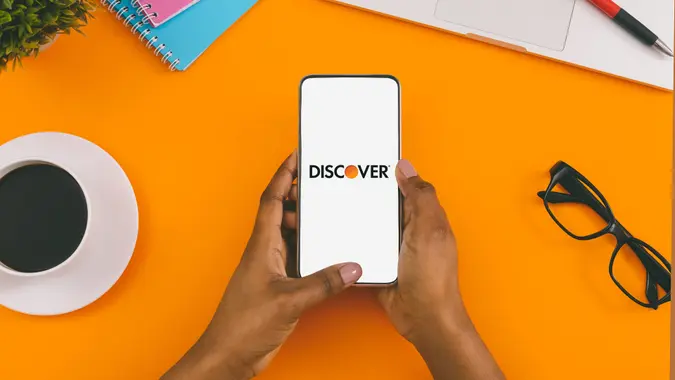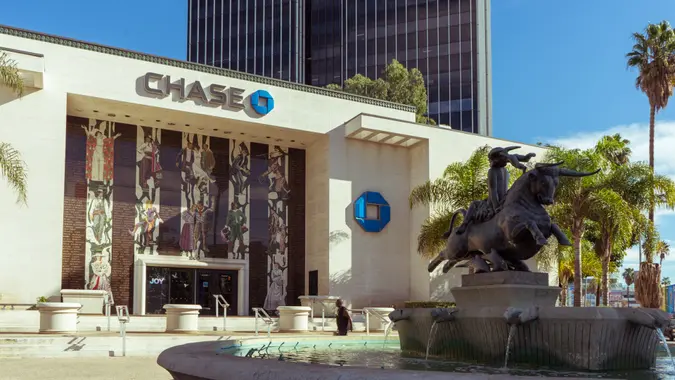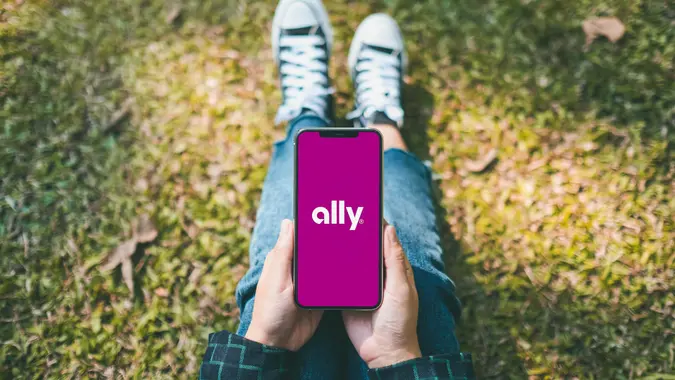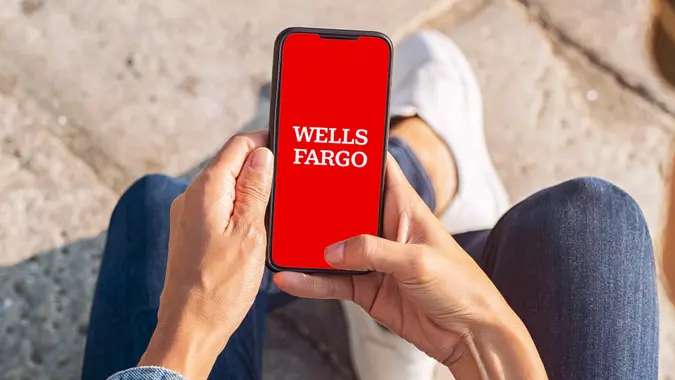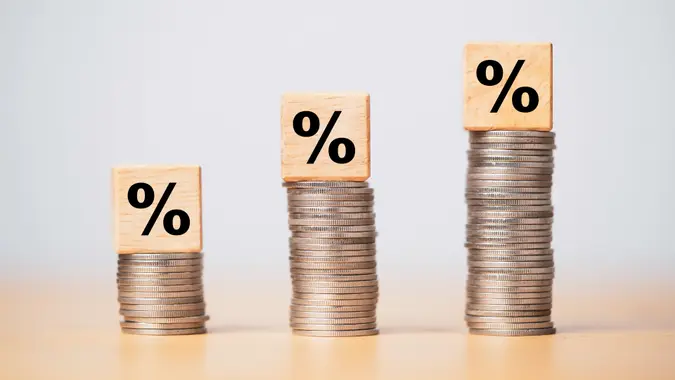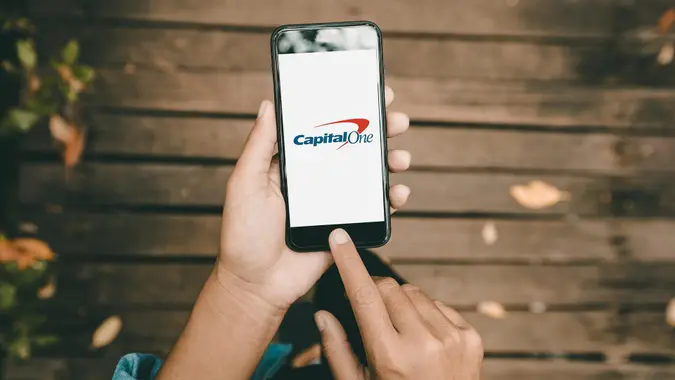5 Reasons To Choose a High-Yield Savings Account Over a CD

Commitment to Our Readers
GOBankingRates' editorial team is committed to bringing you unbiased reviews and information. We use data-driven methodologies to evaluate financial products and services - our reviews and ratings are not influenced by advertisers. You can read more about our editorial guidelines and our products and services review methodology.

20 Years
Helping You Live Richer

Reviewed
by Experts

Trusted by
Millions of Readers
If you don’t have cash in some type of high-yield account, you’re missing out on an exceptional opportunity to grow your money. The Federal Reserve has increased interest rates several times over the past 18 months to thwart inflation, and financial institutions are using attractive high-yield rates to woo new customers. You can currently find APYs of 5.00% or higher on savings accounts and certificates of deposit, with CDs often the APY winner with many banks.
But CDs may not provide the best savings advantage right now. Here are five reasons to consider putting your money into a high-yield savings account rather than a CD, especially if you’re a beginner saver or trying to rebuild your savings.
1. Easy As-You-Need-It Access
According to the recently released outlook for 2024 from BofA Global Research, we likely won’t see a recession in the coming year. Still, it noted that the Fed’s many rate hikes “should ultimately weaken growth and lead to higher unemployment rates.” When facing possible job loss or other financial uncertainty, you never know when you’ll need to pull a little or a lot from your savings.
Depending on the financial institution, pulling money from a CD may require closing it and withdrawing the entire balance, even if you only need a portion. With a savings account, you can take out the amount you need as you need it.
2. Penalty-Free Withdrawals
You also may pay an early withdrawal penalty for closing a CD if you do so before the CD maturity date. For instance, if you close a Capital One 18-month CD four months after you open it, you’ll pay a penalty equal to six months of interest, even if the CD hasn’t been open for six months. Such a penalty can mean losing part of your initial investment.
While some banks may limit the number of monthly fee-free withdrawals you can make with a savings account, you won’t be penalized for closing the account, regardless of how long it has been open. Choose a savings account with no monthly service fee or easy-to-meet requirements for avoiding it, and you’ll always get at least as much back out of your account as you put in if you need to close it.
3. No or Low Initial Deposit Requirements
Some financial institutions, such as Ally Bank or Barclays Bank, allow you to open a CD in any amount. However, many banks have minimum opening deposit requirements of $500 or $1,000, which may limit your options if you don’t yet have that much saved.
Many high-yield savings accounts have no initial deposit requirements. If you’re a new saver, especially on a tight budget, you can start with as little as $1.
4. Ability To Add to Your Balance Regularly
A CD is ideal if you already have a sizable amount saved for a one-time initial deposit. However, unless you open an add-on CD, you typically can’t make additional deposits. It’s also worth noting that add-on CDs usually don’t have the same high yields as traditional CDs.
An inability to make regular deposits can hinder your efforts if you’re trying to build good savings habits. With a savings account, you can make regular deposits, perhaps adopting a pay-yourself-first approach to saving by scheduling automatic monthly transfers from checking to savings.
5. An Advantageous Variable Rate
With a variable-rate savings account, your APY may increase as the Federal Reserve hikes interest rates, as has been the case over the past several months. Traditional CDs have a fixed APY. If interest rates increase, you typically must keep your current CD and its rate or pay the early withdrawal penalty to chase a higher rate. Until interest rates trend downward, a variable APY may provide a better savings advantage than a fixed APY.
Final Take
Considering the uncertain economy and current high-yield savings rates, a savings account could be the better option for your cash for the foreseeable future, especially for beginning savers and anyone trying to replenish their savings. Although the Fed may not increase rates further, BofA Global Research experts predict rates won’t drop before mid-2024, possibly giving savers several more months of current high-yield APYs.
If you don’t have money in a high-yield savings account right now, consider shopping around for one. You can find many high-yield offerings with no monthly fees and with low or no opening deposit requirements. Perhaps once the economy stabilizes and a fixed-rate, fixed-term savings product makes more sense, you’ll have enough in your savings account to move some of that money into a CD.
Our in-house research team and on-site financial experts work together to create content that’s accurate, impartial, and up to date. We fact-check every single statistic, quote and fact using trusted primary resources to make sure the information we provide is correct. You can learn more about GOBankingRates’ processes and standards in our editorial policy.
- U.S. Bank. 2023. "Federal Reserve focuses monetary policy on fighting inflation."
- Bank of America. 2023. "BofA Global Research Calls 2024 'The Year of the Landing.'"
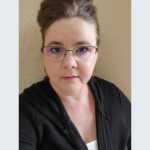 Written by
Written by  Edited by
Edited by 





